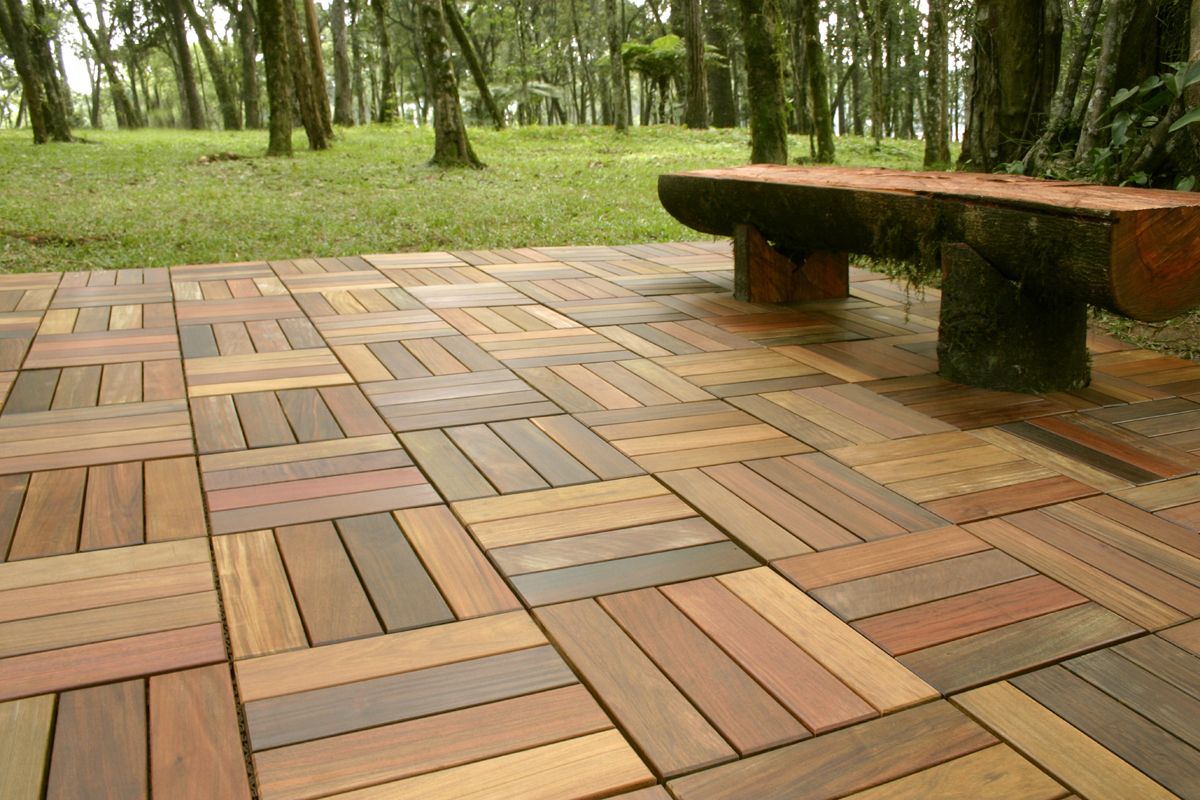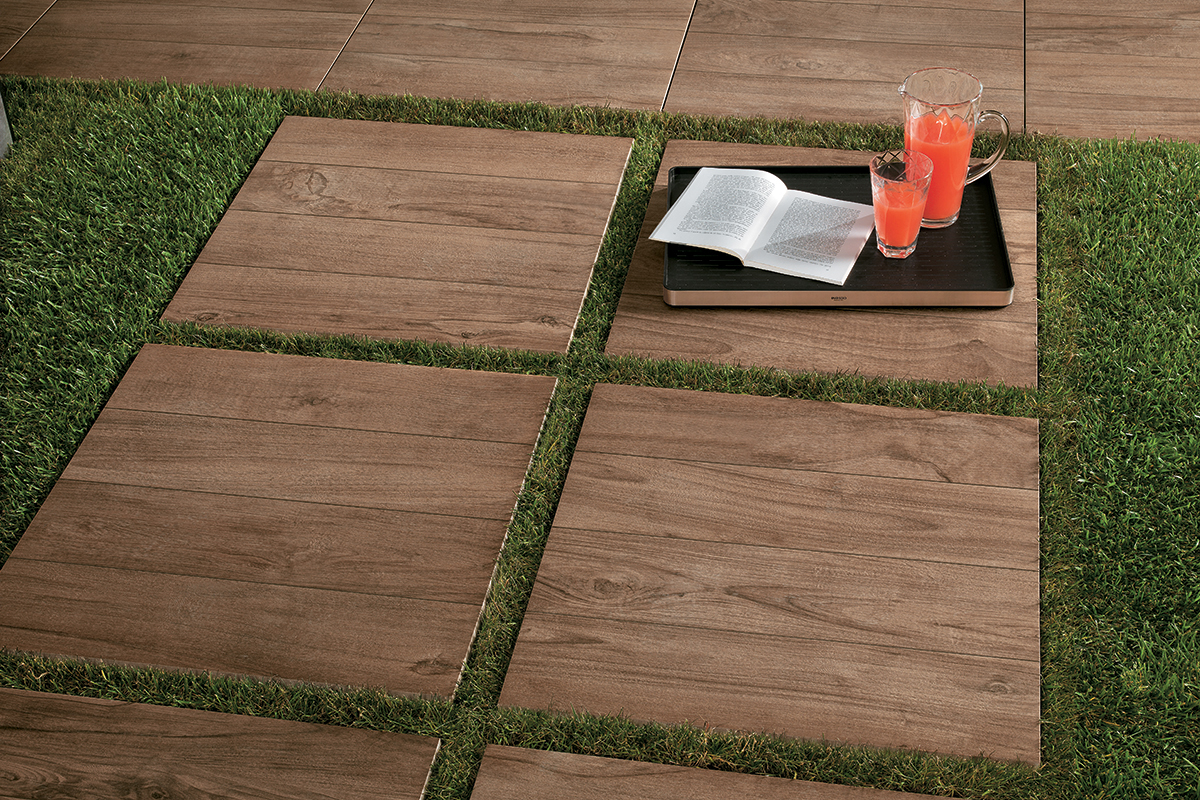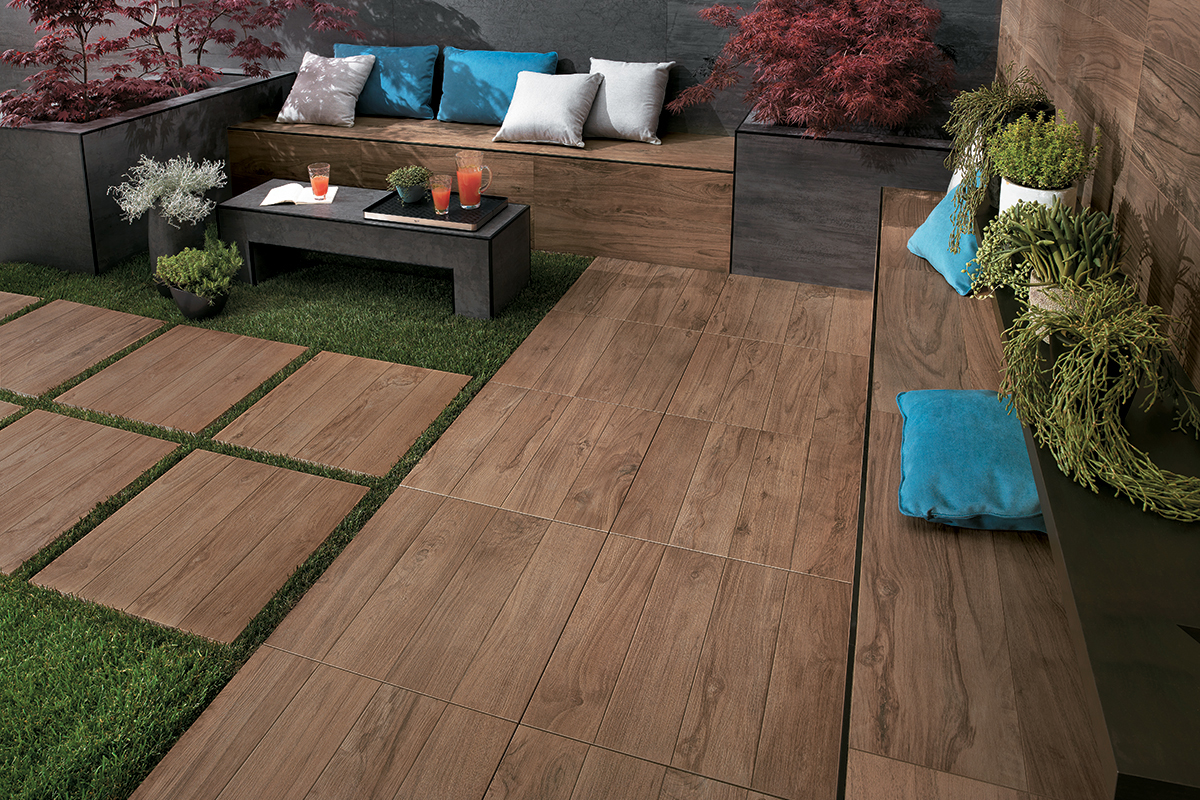Both natural and artificial materials are used to make outdoor floor tiles, which are bonded to a firm, level foundation and are both cut into regular shapes and thicknesses.
Outdoor patios are built using some masonry, such as poured concrete (often colored or stamped), brick, or stone paver goods, where you can find many pictures of the design online.
But how to choose the best one when there is also the option of applying tile to a patio, providing you with many more design options? Laying tile might be a smart way to update a drab brick patio or concrete slab.
A pretty dizzying variety of items, including some you might not have thought of for outdoor use, are frequently sold by retailers who offer tiles for exposed outdoor applications. Your application and climate greatly influence your choice of the best product. In Maine’s humid climate, when frigid winter temperatures are typical, an unsealed sandstone tile that would be perfect in Arizona’s bone-dry climate would be entirely wrong.
Financial Factors Given the wide variety of materials available and the variations in labor prices from region to region, estimating the expenses of a tile patio is challenging. But natural averages demonstrate the following:
Porcelain, ceramic, and quarry clay tiles can cost anywhere between $2 and $30 per square foot in materials and $4 to $14 per square foot in labor.

Natural stone tile costs $5 to $35 per square foot in materials and $8 to $20 per square foot in labor. Slate, soapstone, and granite are more expensive options; travertine, limestone, and soapstone are less expensive alternatives.
Timber and synthetic tile: Plastic, rubber, or carpet tiles cost, on average, $3 per square foot, and the majority of individuals install these materials themselves. The cost per square foot of wood decking tiles is from $8 to $12, whereas that of composite decking tiles is from $4 to $8.
Below, we’ll go over the specifics of each type of tile and the things you should consider when deciding which is ideal for you and your patio.
Slate is best suited for Luxurious patios in any climate.
One of the finest natural stone options for outdoor patio settings is slate. The metamorphic rock known as slate was created under intense heat and pressure. It is extremely durable, hard, and water-resistant. Additionally, unlike some other natural stones, you can choose a product with a natural texture to make it less slippery. Slate is available in various colors, including purple, green, and orange, contrary to the common misconception that it is a dark gray or black stone.
Granite is best suited for: Expensive patios that won’t get stained.
The igneous mineral granite is another natural stone that is occasionally used for patios. Granite is produced as molten volcanic magma cools. Quartz often makes up the majority of its composition. Although granite is a high-end, premium paving material, it has some disadvantages when utilized outside. Granite tile is frequently highly polished, making it slick when wet. In addition, it is a relatively porous stone when compared to other types of tiles, necessitating regular sealing to stop stains and water penetration.

Granite tile can be easily installed over existing pavement. However, cutting granite (and other natural stone) is best done using a wet saw, which is available at rental shops.
Warm, dry regions are ideal for limestone.
Limestone is a sedimentary rock made primarily of carbon-based marine life remains that have been crushed over millions of years. Tiny fossils are frequently found in limestone, occasionally even in paving tiles. Limestone has been a preferred building material for millennia because of its relative abundance and manufacturing simplicity.
The lighter colors of limestone are particularly effective at reflecting heat. Most limestone is found in tan, brown, red, or gray tones. Because limestone is a softer stone than slate or granite, it can be chipped or scratched more easily. And to avoid stains, they must be regularly sealed. It is more suited to patios in dry climates and less suitable for areas with hard winters.Dry areas without frost are ideal for sandstone tiles.
Another sedimentary rock is even softer than limestone and is subject to the same restrictions as sandstone. It has a lovely texture and forms from layers of crushed sand throughout time.
Sandstone must be routinely sealed to avoid stains and water penetration because it is relatively soft and easily scratched. The patios in dry regions without seasonal freeze-thaw cycles are best suited for this stone. However, it is typically far less expensive than limestone and other genuine stone tiles.
Sandstone is another natural stone product that comes in uneven slab form and is used as outdoor paving in sand-set installations.
The best places for travertine tiles are upscale patios in arid climates.
Natural stone with a lovely texture and color is called travertine. This stone, which is mined near mineral spring deposits, is thought to be a type of limestone. Although extremely hard and appealing, it has a slightly pitted surface and may accumulate dirt unless cleaned smoothly. And when wet, highly polished travertine can be exceedingly slippery. Travertine has a wide range in quality depending on the quarries where it was made. Travertine from Turkey or Italy is considered a better water-resistant option for patio use than stone from China or Mexico.
The best climate for soapstone tiles is any climate where water and stain resistance is important.

Non-porous natural stones and quite stain- and water-resistant are known as soapstone because of their silky, smooth texture. Because of its great heat tolerance, it is beneficial in extremely hot environments. It is a great stone for swimming pools and works well in chilly, wet environments. Although soapstone is also found in green and bluish-gray hues, it is frequently mistaken for being a black or dark gray stone.
It may be essential to acquire soapstone tiles from specialized stores or internet sources as they can be more difficult to find than other types of real stone. Chain tile stores don’t frequently stock these.
Quarry tile is best suited for: Expensive patios in hotter areas.
Contrary to its name, quarry tile is a hybrid artificial stone manufactured from a highly dense type of unglazed clay blended with finely ground natural minerals and burnt to make a hard product, similar to conventional bricks made. These tiles are really durable and work fantastically as patio paving. This tile was developed especially for use in patios and outside courtyards.
Quarry tiles come in a small selection of colors, such as red, brown, or gray, as opposed to ceramic and porcelain tiles. Many homeowners highly value the Mediterranean appearance that quarry tiles offer. Quarry tiles offer excellent water resistance despite being typically unglazed, and their texture keeps them from being slick when wet.
For climates where most winters are spent in subfreezing temperatures, quarry tile is not a good option. Additionally, it has a reputation for being easily stained if not routinely sealed. But this is one of the best patio options in the ideal environment. Additionally, it performs admirably in any environment as a sun porch flooring surface.











Your comment submitted.